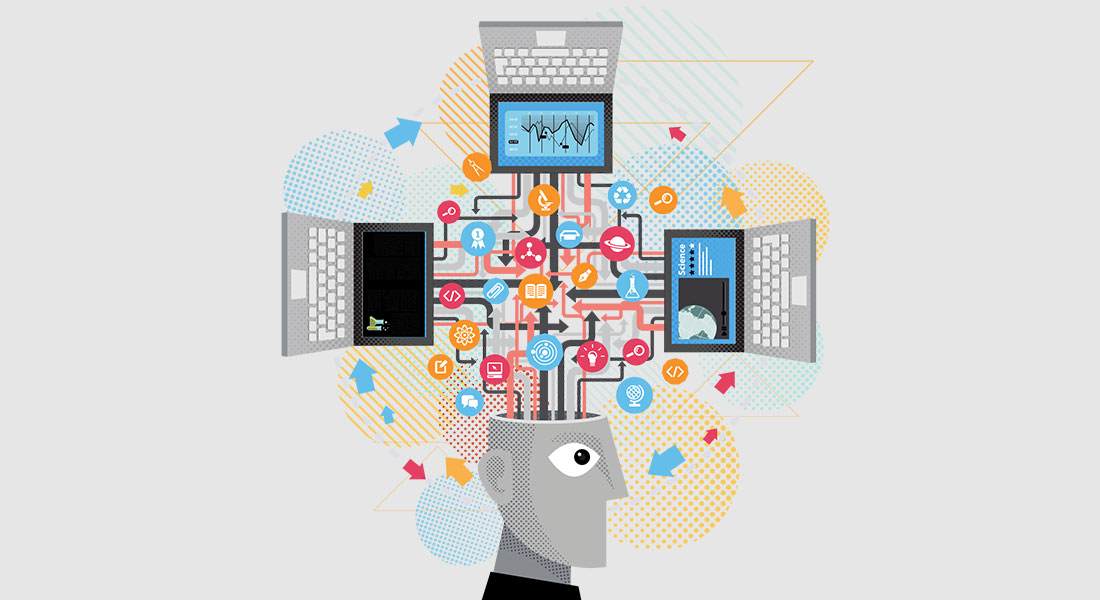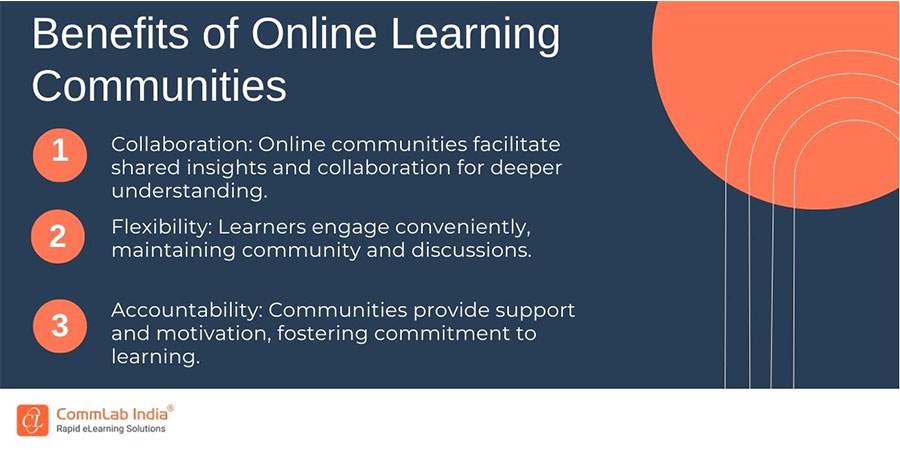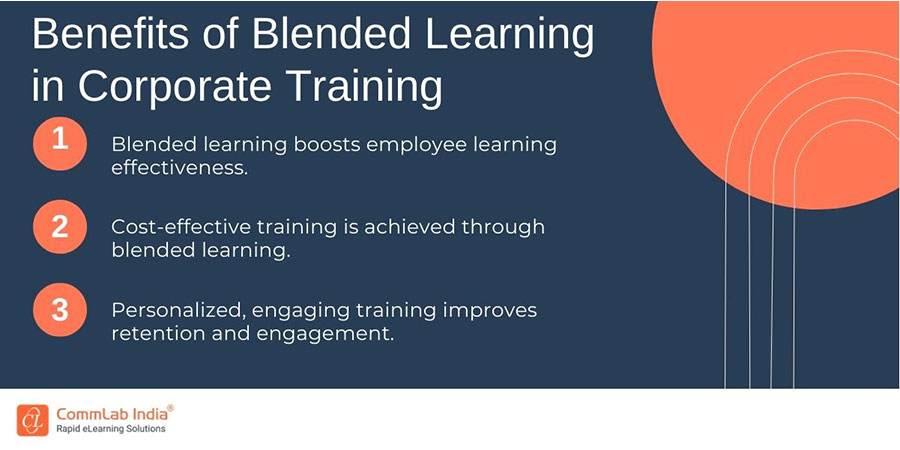Blended Learning for Corporate Training: 5 Unique Formats to Use!

We live in a dynamic business world where traditional training methods just don't cut it anymore! That's where blended learning steps in... Blended Learning is a dynamic approach that combines online and offline techniques to create a truly tailored experience for your employees. But what exactly is blended learning and what are the different formats that can be used to blend your corporate training initiatives?
Have the same question? This blog answers it...
This blog will unveil 5 unique blended learning formats that will revolutionize how you engage and empower your workforce.
Want to Blend Your Learning and Development Initiatives but don’t know Where to Start?
Here are some formats to try:
- Flipped Classroom
- Hybrid Courses
- Online Learning Communities
- Gamification
- Blended Mini-Courses
From virtual classrooms to on-the-job simulations, get ready to discover the key ingredients for an unforgettable training blend that'll leave a lasting impact on your organization's success!
Introduction to Blended Learning
Blended learning is an instructional strategy that combines face-to-face training with online learning experiences. It has been used in education for many years, and more recently in corporate training. When used correctly, blended learning can be an extremely effective way to train employees.
The key to successful blended learning is finding the right mix of activities that works for your specific training needs. It is also important to consider the different learning styles of your employees when designing a blended learning program. Some employees may prefer more face-to-face interaction, while others may prefer the flexibility of learning online. By tailoring your blended learning program to the needs of your employees, you can create an effective training solution that will help your business succeed.
Benefits of Blended Learning in Corporate Training

Blended learning offers a versatile approach to corporate training, benefiting employees in multiple ways. Firstly, it combines traditional employee training with digital tools to help employees grasp new information effectively. Further, this approach also cuts training costs for companies without compromising quality. Additionally, by tailoring the learning experience to individual preferences, blended learning enhances information retention and engagement among employees.
In essence, blended learning is a smart strategy that improves learning outcomes, saves costs, and enriches the training experience.
Learn more about blended learning:
Let us now discuss the different formats that fall under blended learning:
Five Unique Formats of Blended Learning
Flipped Classroom
In corporate training, a flipped approach involves employees accessing the corporate training materials or resources independently (sometimes even before the session) and using the training time for practical exercises or collaborative projects. This method empowers employees to learn at their own speed and utilize the training time for interactive discussions and guidance from the instructor.
The following are the benefits of choosing the flipped format for blended learning -
- Personalized Learning: The flipped model in corporate training accommodates individual learning speeds and preferences, enhancing comprehension and engagement.
- Efficient Use of Time: Pre-learning outside of the training session optimizes in-person time for practical application, problem-solving, and interaction.
- Active Engagement: Employees collaboratively explore and apply concepts during the session, fostering deeper understanding and knowledge retention.
Hybrid Courses
Hybrid corporate training combines online and in-person learning, offering a balanced approach. This works well for practical skills, like technical training or customer service. Trainees can do some learning online for flexibility and also benefit from face-to-face sessions with trainers and colleagues for hands-on guidance and teamwork.
The following are the benefits of choosing the hybrid courses format for blended learning -
- Versatility: Hybrid corporate training blends online and in-person learning, accommodating various learning styles and preferences.
- Flexibility: Trainees can complete online components on their schedule, promoting work-life balance and reducing disruptions.
- Interactive Learning: In-person sessions enable direct interaction with trainers and peers, enhancing engagement, collaboration, and skill development.
Online Learning Communities
In corporate training, an online learning community comprises employees who virtually collaborate on tasks and projects. This setup suits individuals who thrive on social learning and teamwork. These communities offer a constructive space for employees to exchange insights, offer input, and uphold mutual responsibility, fostering a conducive environment for learning and development.

→ Download Now: Blended Learning to Boost Employee Performance [eBook]
Gamified Learning
Gamified learning within blended learning involves integrating elements of online games and simulations into traditional training methods. By infusing training content with game-like features such as challenges, rewards, and interactive scenarios, this approach aims to enhance learner engagement and comprehension.
The following are the benefits of choosing the gamified format for blended learning -
- Enhanced Engagement: Gamified learning increases learner engagement by tapping into the motivational aspects of games, encouraging active participation.
- Higher Retention: Interactive scenarios and challenges in gamified content promote better retention of information through experiential learning.
- Increased Motivation: Rewards and achievements within gamified content provide intrinsic motivation for learners to progress and excel.
Microlearning Modules
Microlearning in the context of blended learning involves breaking down employee training content into concise, self-contained modules. These modules are supplemented by practical activities designed to reinforce learning and encourage continuous engagement.
The following are the benefits of choosing the microlearning format for blended learning -
- Efficient Learning: Microlearning breaks down content into manageable chunks, enabling learners to absorb information quickly and efficiently.
- Flexible Learning Paths: Microlearning allows learners to choose specific modules that cater to their learning needs, promoting personalized learning paths.
- Continuous Reinforcement: Practical activities following microlearning modules reinforce understanding, helping learners apply concepts in real-world contexts.
Wrapping Up
Tailoring corporate training using blended learning gives organizations a powerful tool for implementing successful and effective solutions. With such an array of formats to choose from, one can create customized designs that address the needs of teams as well as individual learners. Additionally, the right blend will also Additionally, the right blend will also help boost employee performance.
Download this eBook to know how!




![Top 5 Blended Learning Formats for Software Training [Infographic]](https://blog.commlabindia.com/hubfs/blogs/Top%205%20Blended%20Learning%20Formats%20for%20Software%20Training.jpg)
![What Exactly is the Bookend Blended Learning Model? [SlideShare]](https://blog.commlabindia.com/hubfs/Imported_Blog_Media/blended-learning-bookend-model-slideshare.jpg)